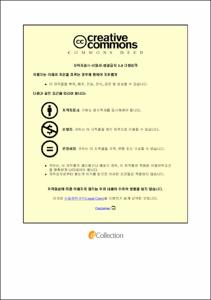한중일 조선기자재 산업의 수출경쟁력 실증 분석 연구
- Alternative Title
- The Empirical Study on Export Competitiveness of Marine Equipment Industry in Korea, China and Japan
- Abstract
- This study analyzes the export competitiveness of the Korean marine equipment industry and compares it with the marine equipment industry in China and Japan. The export competitiveness analysis method used the revealed symmetric comparative advantage, which indicates the degree of comparative advantage, and the trade specialization index, which indicates the specialization of import or export. The items of marine equipment for analysis were defined according to the MTI classification system, and data corresponding HS codes were collected through the International Trade Centre. The analysis subjects are the main five items of anchor(731600), compression ignition engine and parts(840810, 840999), propeller blades(848710) and measuring instruments(903180).
The analysis results of export competitiveness of marine equipment industry during the analysis period are as follows. China's export competitiveness has been strengthened, but it is in a comparative disadvantage. Japan is maintaining a comparative advantage. Korea's export competitiveness has been strengthened, turning it into a comparative advantage in the 2010s from the 2000s. The results of this analysis are the same in the two analysis methods of the revealed symmetric comparative advantage and trade specialization index.
The results of export competitiveness analysis by item are as follows. Korea has a comparative advantage in compression ignition engines and parts(840810, 840999) and measuring instruments(903180). China has a comparative advantage in anchor(731600). Japan has a comparative advantage in other items except for anchor(731600) such as compression ignition engines and parts(840810, 840999), propeller blades(848710), and measuring instruments(903180). According to the results, Japan has a higher level of export competitiveness than Korea and China.
The results of analysis of export competitiveness by items and among each country are as follows. Korea has a comparative advantage in two items such as compression ignition engine(840810) and measuring instruments(903180) over China, while compression ignition engine parts(840999) has a comparative advantage over Japan. China has a comparative advantage over both Korea and Japan in anchor(731600), and the propeller blades(848710) has a comparative advantage only in Japan. Compared with Korea and China, Japan has a comparative advantage in compression ignition engines(840810) and propeller blades(848710). While measuring instruments(903180) has a comparative advantage in only Japan. This result showed that Japan is the leader in technology and localization rate.
Through research, Korea has secured export competitiveness in some items. In order to enhance Korea's export competitiveness, it is necessary to has a product differentiation strategy against China's technological strengthening policy and also need a technology securing strategy for low-tech items compared to Japan. In addition to this strategies, there is a need for technology development and manpower support policies for high value added engineering fields.
- Issued Date
- 2019
- Awarded Date
- 2019. 8
- Type
- Dissertation
- Publisher
- 부경대학교
- Alternative Author(s)
- Changmin, Park
- Affiliation
- 부경대학교 대학원
- Department
- 대학원 경영컨설팅협동과정
- Advisor
- 홍재범
- Table Of Contents
- 제 1 장 서론 1
제1절 연구 배경 및 목적 1
제2절 연구 내용과 구성 3
제 2 장 이론적 배경 5
제1절 조선 산업 5
가. 조선 산업 정의와 특성 5
나. 조선 산업 현황 7
제2절 조선기자재 산업 12
가. 조선기자재 산업 정의 12
나. 조선기자재 산업 분류 15
다. 조선기자재 산업 수출 현황 22
제3절 조선 산업과 조선기자재 산업의 관계 26
제 3 장 연구 모형 29
제1절 현시비교우위(RCA) 지수 29
제2절 무역특화지수(Trade Specialization Index) 33
제3절 선행 연구 검토 34
제4절 분석자료 37
제 4 장 연구 결과 45
제1절 현시비교우위(RSCA) 분석 결과 46
가. 한국 조선기자재 산업 RSCA 분석 결과 46
나. 한국 조선기자재 산업 MSCA 분석 결과 49
제2절 무역특화지수(TSI) 분석 결과 55
제3절 한·중·일 비교 분석 결과 58
가. 중국과 일본의 RSCA 분석 결과 58
나. 한·중·일 RSCA 분석 결과 비교 64
다. 중국과 일본의 MSCA 분석 결과 65
라. 한·중·일 MSCA 분석 결과 비교 76
마. 중국과 일본 TSI 분석 결과 80
바. 한·중·일 TSI 분석 결과 비교 86
제 5 장 결론 및 향후 연구계획 89
제1절 연구 결과 요약 89
제2절 연구의 한계 및 향후 연구 방향 94
참고문헌 95
부록 1. 유럽연합의 조선기자재 분류 체계(NACE rev.2 기반) 100
부록 2. 한·중·일 조선기자재 품목별 수출액 106
부록 3. 한·중·일 조선기자재 전품목 RSCA 결과 112
부록 4. 한·중·일 조선기자재 전품목 MSCA 결과 118
부록 5. 한·중·일 조선기자재 전품목 TSI 결과 130
- Degree
- Doctor
- Files in This Item:
-
-
Download
 한중일 조선기자재 산업의 수출경쟁력 실증 분석 연구.pdf
기타 데이터 / 2 MB / Adobe PDF
한중일 조선기자재 산업의 수출경쟁력 실증 분석 연구.pdf
기타 데이터 / 2 MB / Adobe PDF
-
Items in Repository are protected by copyright, with all rights reserved, unless otherwise indicated.